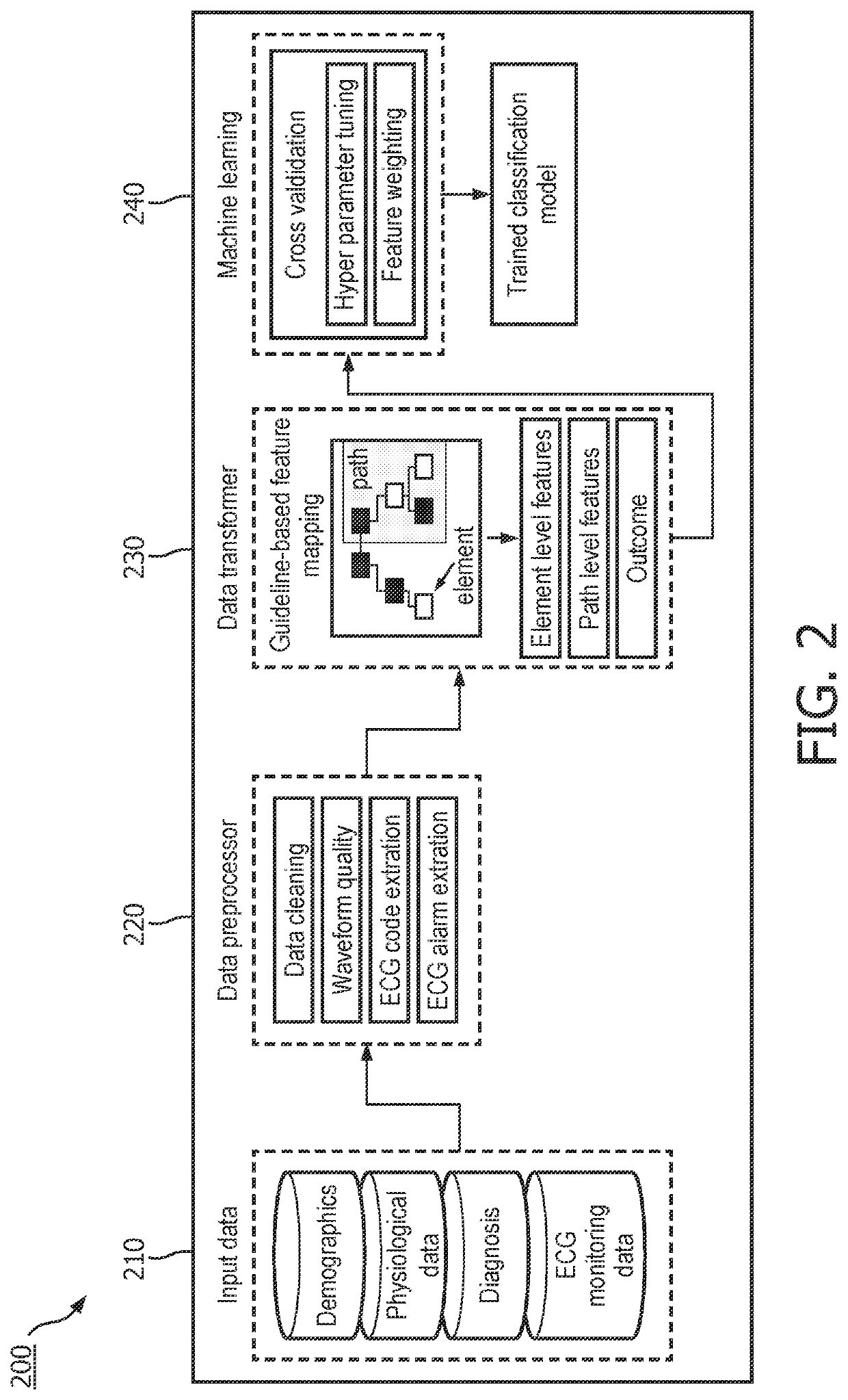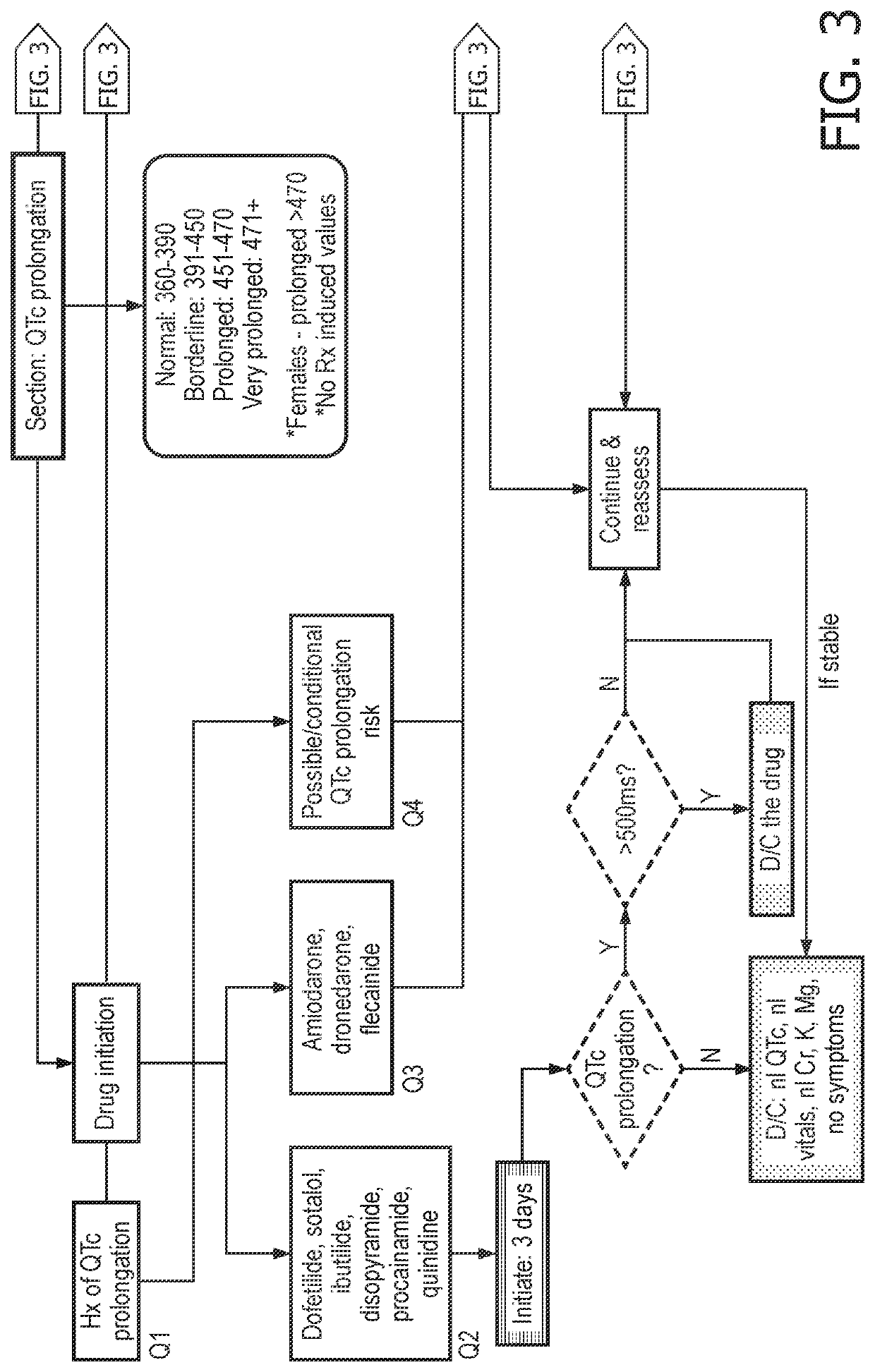System and method for identifying low clinical value telemetry cases
a telemetry and low clinical value technology, applied in the field of system and method for identifying low clinical value telemetry cases, can solve the problems of life-threatening events that might be missed, low job satisfaction, burnout, etc., and achieve the effects of reducing or preventing alarm fatigue, maximizing hospital resources, and improving patient outcomes
- Summary
- Abstract
- Description
- Claims
- Application Information
AI Technical Summary
Benefits of technology
Problems solved by technology
Method used
Image
Examples
Embodiment Construction
[0034]The present disclosure describes various embodiments of a system and method for generating a telemetry indication score for a patient using a telemetry analysis system. Applicant has recognized and appreciated that it would be beneficial to provide a method and system that can more accurately and more quickly provide an analysis regarding whether telemetry is indicated or contraindicated for a patient, in order to reduce or prevent alarm fatigue, to maximize hospital resources, and to lead to improved patient outcomes. The telemetry analysis system receives medical information about a patient including patient demographics, physiological measurements, medical history, and / or patient diagnosis. The telemetry analysis system analyzes the medical information using a decision support tool that comprises a set of telemetry guidelines. A trained machine learning algorithm of the telemetry analysis system uses the results of the decision support tool analysis to determine a telemetry...
PUM
 Login to View More
Login to View More Abstract
Description
Claims
Application Information
 Login to View More
Login to View More - R&D
- Intellectual Property
- Life Sciences
- Materials
- Tech Scout
- Unparalleled Data Quality
- Higher Quality Content
- 60% Fewer Hallucinations
Browse by: Latest US Patents, China's latest patents, Technical Efficacy Thesaurus, Application Domain, Technology Topic, Popular Technical Reports.
© 2025 PatSnap. All rights reserved.Legal|Privacy policy|Modern Slavery Act Transparency Statement|Sitemap|About US| Contact US: help@patsnap.com



